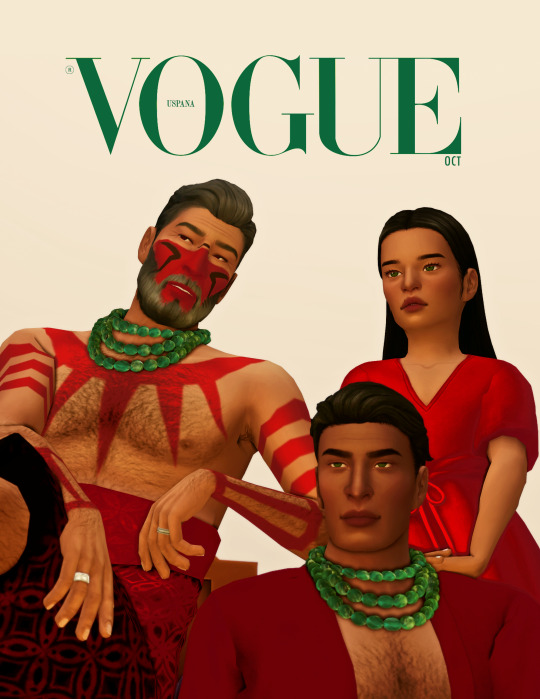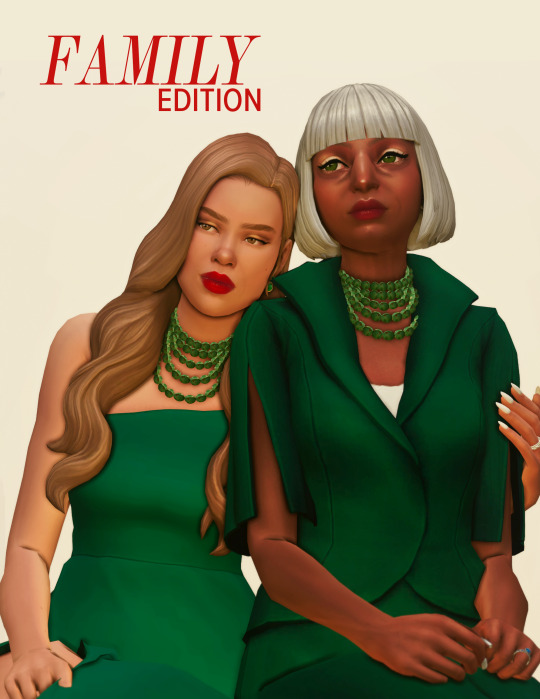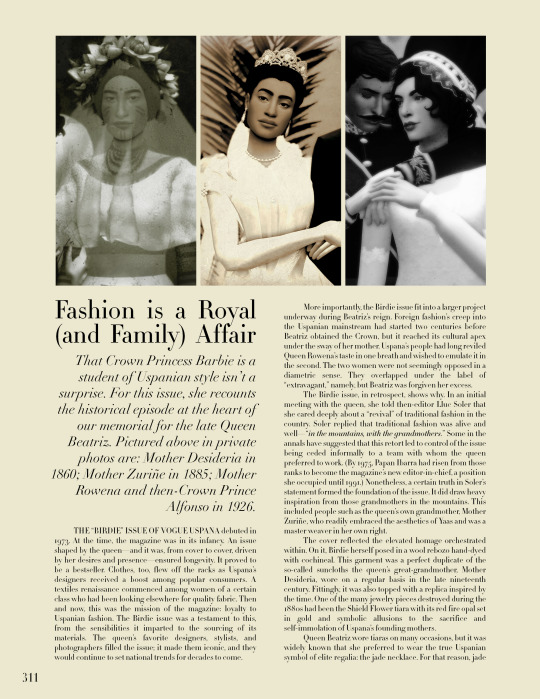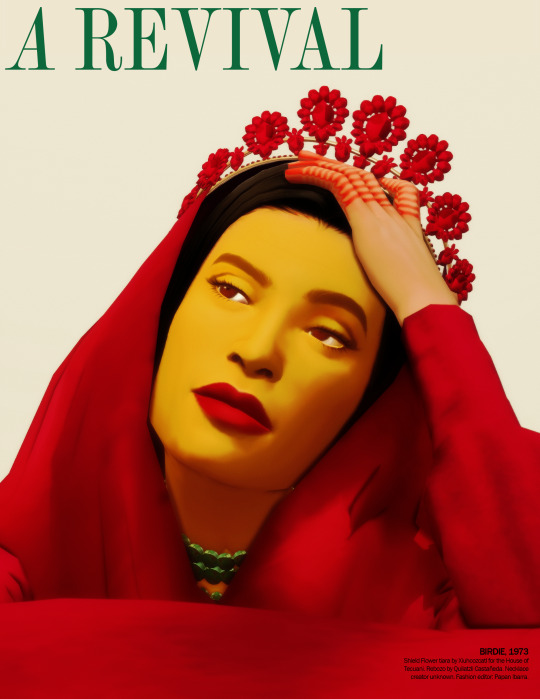#no but why are the vogue layouts kinda ugly sdfkdsg
Text




have been feeling listless and unmoored re: sims stuff lately, but i got a healthy dose of inspiration from @warwickroyals & @prydainroyals this past week, so i did a little succession / magazine-ish thing :^) obviously beatriz's 2023 death would be commemorated in uspanian vogue !!!!! obviously !!!!
transcribed text below:
Fashion is a Royal (and Family) Affair
That Crown Princess Barbie is a student of Uspanian style isn’t a surprise. For this issue, she recounts the historical episode at the heart of our memorial for the late Queen Beatriz. Pictured above in private photos are: Mother Desideria in 1860; Mother Zuriñe in 1885; Mother Rowena and then-Crown Prince Alfonso in 1926.
THE “BIRDIE” ISSUE OF VOGUE USPANA debuted in 1973. At the time, the magazine was in its infancy. An issue shaped by the queen—and it was, from cover to cover, driven by her desires and presence—ensured longevity. It proved to be a bestseller. Clothes, too, flew off the racks as Uspana’s designers received a boost among popular consumers. A textiles renaissance commenced among women of a certain class who had been looking elsewhere for quality fabric. Then and now, this was the mission of the magazine: loyalty to Uspanian fashion. The Birdie issue was a testament to this, from the sensibilities it imparted to the sourcing of its materials. The queen’s favorite designers, stylists, and photographers filled the issue; it made them iconic, and they would continue to set national trends for decades to come.
More importantly, the Birdie issue fit into a larger project underway during Beatriz’s reign. Foreign fashion’s creep into the Uspanian mainstream had started two centuries before Beatriz obtained the Crown, but it reached its cultural apex under the sway of her mother. Uspana’s people had long reviled Queen Rowena’s taste in one breath and wished to emulate it in the second. The two women were not seemingly opposed in a diametric sense. They overlapped under the label of “extravagant,” namely, but Beatriz was forgiven her excess.
The Birdie issue, in retrospect, shows why. In an initial meeting with the queen, she told then-editor Lluc Soler that she cared deeply about a “revival” of traditional fashion in the country. Soler replied that traditional fashion was alive and well—“in the mountains, with the grandmothers.” Some in the annals have suggested that this retort led to control of the issue being ceded informally to a team with whom the queen preferred to work. (By 1975, Papan Ibarra had risen from those ranks to become the magazine’s new editor-in-chief, a position she occupied until 1991.) Nonetheless, a certain truth in Soler’s statement formed the foundation of the issue. It did draw heavy inspiration from those grandmothers in the mountains. This included people such as the queen’s own grandmother, Mother Zuriñe, who readily embraced the aesthetics of Yaas and was a master weaver in her own right.
The cover reflected the elevated homage orchestrated within. On it, Birdie herself posed in a wool rebozo hand-dyed with cochineal. This garment was a perfect duplicate of the so-called suncloths the queen’s great-grandmother, Mother Desideria, wore on a regular basis in the late nineteenth century. Fittingly, it was also topped with a replica inspired by the time. One of the many jewelry pieces destroyed during the 1880s had been the Shield Flower tiara with its red fire opal set in gold and symbolic allusions to the sacrifice and self-immolation of Uspana’s founding mothers.
Queen Beatriz wore tiaras on many occasions, but it was widely known that she preferred to wear the true Uspanian symbol of elite regalia: the jade necklace. For that reason, jade
BIRDIE, 1973 Shield Flower tiara by Xiuhcozcatl for the House of Tecuani. Rebozo by Quilatzli Castañeda. Necklace creator unknown. Fashion editor: Papan Ibarra.
#this wasn't gonna be a whole thing#but i decided Why Not#this is what the kids call worldbuilding after all :^)#rip queen birdie )^:#no but why are the vogue layouts kinda ugly sdfkdsg#ch.arnaut#ch.german#ch.malena#ch.barbie#ch.lorraine#ch.beatriz#reyes.worldbuilding
133 notes
·
View notes